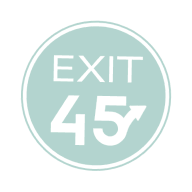Synopses of Numbers 12 - 22 of 66 Obstacles to a Successful Business Sale
In the last issue (#24), we provided brief Synopses of Numbers 1 – 11 of 66 Obstacles to a Successful Business Sale. This issue will give short Synopses of Numbers 12 – 22 of 66 Obstacles to a Successful Business Sale.
"We are all faced with a series of great opportunities brilliantly disguised as unsolvable problems." John W. Gardner
Synopses of Numbers 12 - 22 of 66 Obstacles to a Successful Business Sale
To view the complete list of 66 obstacles, click on this article: Issue #23 – 66 Obstacles to a Successful Business Sale.
Following are brief summaries of obstacles 12 – 22:
12) Customer Concentration Issues
If 10-15% of your revenues are derived from one customer or 25-30% are derived from two or three customers, you might have a customer concentration issue. This affects a buyer’s perception of the business and the ability for a buyer to obtain lender financing. Read more in this article: Issue #68 – Customer Concentration Issues.
13) Asset Value too High vs. Return on Investment
Asset-laden businesses sometimes have asset values in excess of the value of the business based on its earnings. Unfortunately, you won’t be paid based on earnings plus the value of the assets. It’s one or the other, and this situation can create a significant obstacle. Read more in this article: Issue #69 – Asset Value too High vs. Return on Investment.
14) Real Estate Value too High vs. Return on Investment
When a business owner also owns the real estate occupied by the business and the real estate value is substantially higher than that of the business, it may result in a detrimental effect on the salability of the business. Read more in this article: Issue #70 – Real Estate Value too High vs. Return on Investment.
15) Large Working Capital Requirements
Three factors have an impact on working capital needs: 1) long collection periods on accounts receivable; (2) inflexible payment terms from vendors/suppliers; and 3) the need to carry large amounts of inventory. Large working capital requirements detrimentally affect the value of a business and sometimes create a major obstacle for buyers. Read more in this article: Issue #71 – Large Working Capital Requirements.
16) Excessive Personal Expenses and Skimming Cash
Owners who run excessive personal expenses through their business and /or do not report cash transactions end up understating their true business earnings. Since business valuations are based on earnings, it’s best to eliminate these practices at least three years before selling your business. Read more in this article: Issue #72 – Excessive Personal Expenses and Skimming Cash.
17) Burned-Out Owner Ruins Business Value
When owners lose enthusiasm for their businesses, the company usually starts on a gradual downhill slide. Many burned-out owners hold on to their businesses far too long allowing the business valuation to slide to the point where a sale is either not sufficient to meet the owner’s personal goals or cannot be sold at all. Read more in this article: Issue #73 – Burned-Out Owner Ruins Business Value.
18) Owners Who Try to Sell the Business Themselves
Most owners have no idea of all the pitfalls they are likely to encounter, nor of the time-consuming nature of the efforts required to sell a business. As an example, controlling confidentiality is a major problem. Read more in this article: Issue #74 – Owners Who Try to Sell the Business Themselves.
19) Owners Who are not Committed to a Sale
“Dipping your toe in the water” is not likely to produce desirable results. To the contrary, it is more likely to produce an undesirable outcome. Read more in this article: Issue #75 – Owners Who are not Committed to a Sale.
20) Choosing The Wrong Intermediary
There is a wide range of capabilities amongst the world of business brokers and intermediaries. Although it is best to work with an intermediary, it’s important to avoid the bad ones. Read more in this article: Issue #76 – Choosing the Wrong Intermediary.
21) Trust Issues from Inadequate Disclosures before Due Diligence
The best way to develop trust with the buyer is to disclose all known issues upfront. A candid seller helps earn the confidence and trust of the buyer. Read more in this article: Issue #78 – Trust Issues from Inadequate Disclosures before Due Diligence.
22) Inadequate Preparation for Due Diligence
Negative surprises in due diligence will almost always kill a deal. Disclosing known negatives on the front end and anticipating the buyer’s requests in due diligence can help keep a transaction moving forward on a timely basis. Read more in this article: Issue #79 – Inadequate Preparation for Due Diligence.
"Freedom in general may be defined as the absence of obstacles to the realization of desires." Bertrand Russell
Overcome the Power of Inertia
Overcome the Power of Inertia and call a business broker for a free consultation. Many brokers offer no-charge, no-obligation evaluations of small businesses. They can provide a broker opinion of value and help you identify obstacles to a successful sale as well as opportunities for improvement to increase the value of your business. That is a great way to start planning for a successful and profitable exit from your business.

